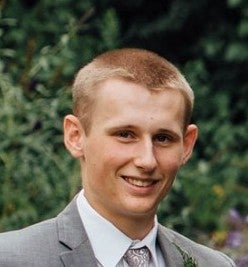Justin Seablom

Pronouns: He/Him/His
UROP Fellowship: University of Michigan Energy Institute
Research Mentor(s): Nilton Renno
Department of Climate and Space Sciences and Engineering
Presentation Date: Thursday, July 30, 2020 | Session 2 | Presenter: 6
Authors: Justin Seablom, Matthew Perez, Mojtaba Akhavan-Tafti, Nilton Renno
Abstract
The use of photovoltaic cells (PV) to generate solar power large land areas. PV cells are the component of solar panels that collect sunlight and convert it to electrical power. Solar panels must be laid relatively flat and spaced out to prevent the shading of neighboring panels. The goal of Electromagnetic Energy Converter (EMEC) project is to Develop compact panels such that less the power generate per area covered increases compared to commercially available panels, creating an EMEC device with more applications than current commercial panel applications.
The goal of the project is to maximize power from solar panels under non-optimal conditions. The EMEC project focuses on controlling factors such as angle of the cell, distance between cells, and medium through which the light travels to maximize power per area (PPA). The project also studies the effect of stacking multiple layers of cells on top of each other to maximize power density in a controlled volume. The EMEC project targets urban applications where land is not as openly available and is thus less viable for solar power.
The computational modeling of the EMEC device will allow for many configurations to be tested without having to make physical prototypes for every test. The target of the model is to simulate real-world conditions as closely as possible. Light is modeled as photons that move and act as they would in reality. The photons experience refraction, scattering, absorption, and many more physical and optical phenomena that sunlight experiences. Power is simulated as the number of photons that hit a PV cell with a certain energy, with some power loss due to inefficiencies of the cell.
Running a multitude of tests allows for optimization of the parameters that are involved in physical testing. The results will help answer questions about the best distance(s) and angle(s) to put the cells in to maximize power and power per area.
Google Slide Presentation
Presentation Script
Research Disciplines
Engineering



